UK Health and Safety Fines
Sentencing Guidelines
In February 2016, the Sentencing Council’s Definitive Guideline for Health and Safety Offences, Corporate Manslaughter and Food Safety and Hygiene Offences (more commonly referred to as the ‘Sentencing Guidelines‘) came into force in England. This gave the courts a clearer remit for sentencing individuals and organisations; fixing UK Health and Safety fines that correlate with the annual turnover of a business.
This was a move from the older guidelines that were restricted and capped. The impact this has had is that the larger the organisation’s annual turnover, the higher the fine can now be. The reasoning behind the reorganisation of the sentencing guidelines is that the sentences passed down are “sufficiently substantial to have a real economic impact which will bring home to both management and shareholders the need to comply with health and safety legislation” (IOSH, 2018).
Instead of focussing on what did happen and any actual injury or loss in a given prosecution, the courts can now set fines in accordance to the risk of what could have happened in relation to the risk i.e. the likelihood and severity of harm.
For example, if a worker was involved in a fall from height that resulted in a fracture, if the fall could have resulted in a fatality, the courts will deem this as the highest risk and base the calculation of the fine accordingly. In addition to this, the court will also look at how co-operative the organisation or individual has been throughout any investigation and what remedial actions have been taken to mitigate the risk.
Fines and Prosecutions
To assess the impact of these new sentencing guidelines, looking at fines and prosecutions in UK over the last six years is a good place to start.
According to the Health and Safety Executive (HSE), fines for health and safety offences were on the increase even prior to the new sentencing guidelines being introduced. In the graph below (HSE, 2018) shows that the totals of fines being passed down by courts annually. Whilst the level has continued steadily, it is difficult to tell whether this is shows an increase in prosecutions, or whether there are fewer cases, but that the larger fines are increasing the upward trend.
Total fines for health and safety offences prosecuted by HSE and in Scotland COPFS*1
This is answered by looking at the total number of prosecution cases being brought over the same period:
Prosecution cases brought by HSE and in Scotland COPFS*1
As we can see, the number of cases being brought has decreased. This could indicate that organisations and individuals are now more aware of the implications of statutory non-compliance. However, a concern is that from the data the number of larger fines indicates that the larger organisations account for the continued increase in fines from sentences.
What does this mean for businesses?
What does this mean for businesses? The message is that nobody is above the law. Health and safety should be a priority for all organisations large and small and it starts with the leadership.
Whether the business is a sole trader or a global business, the person (or persons) at the top hold the final accountability for any health and safety practices. Below are the main areas that should form part of the health and safety management to ensure statutory compliance.
Leadership
Health and safety should form an integral part of business strategic management with a suitable budget, resource allocation and focus at any board meeting. Appointing a senior manager as a health and safety champion will demonstrate commitment, reinforcing the positive approach to safeguarding the health and safety of workers.
However, all senior management or board members need to understand the role and responsibility that they have in regards to health and safety with full awareness and understanding of legislative requirements. There is extensive guidance available on this topic from the HSE that can be utilised continually and as one-off training sessions.
An introduction of a robust health and safety management system will give a framework for all levels of organisational hierarchy and should be supported by access to specialist health and safety advice and input where required. This “top down” leadership from the senior management will also promote a positive health and safety culture.
Standardisation of ideals, policy, processes and communication routes should also be set out clearly and be included in management training.
Management
Taking a lead from the senior management team, they will be allocated budget and resources, have clear responsibilities and be given the training and skills development needed to ensure adequate supervision of workers, assessing competence of workers and contractors and being able to enact any discipline knowing that they will be supported by their leaders.
Being seen to undertake monitoring and inspections will encourage workers that the organisational risks are being taken seriously and will enhance the message that health and safety is a priority.
Worker involvement
With a strong leadership and clear management structure in health and safety, workers will feel supported and valued. Good supported training in hazards, associated risks and control measures will reinforce this message. By involving workers in consultation regarding health and safety matters, trends and results of audits etc. workers will buy-in to the health and safety ethos set by the organisational leaders and are more likely to abide by the standards and rules set by the organisation.
It is well known that continual improvement is a target of any health and safety management system and should remain as a focus but with realistic aims and objectives. This can be kept on track by regular review of any monitoring, investigation, consultation and audit findings. Attention needs to be paid to any developing trends such as absenteeism, staff turnover or accident rates as these could indicate an issue that is not being addressed.
An example could be that if the targets are unrealistic, workers will undoubtedly take shortcuts which could be a fast track to a large fine. It is therefore important that any reviews are done carefully and with attention to detail rather than just paying lip service to this essential part of the health and safety management process. From there, any issues identified can be addressed and hopefully resolved.
In conclusion, health and safety fines do appear to have had an effect on organisations in that the number of prosecutions has decreased, but the larger fines are on the increase. Basically, this is a call to all larger organisations to get on board and improve the health and safety throughout all levels of the business. Not only should the prospect of a very large fine be a deterrent, but the health and welfare of workers and the public should be a priority. Always.
Victoria Hughes
BSc(Hons.), DipNEBOSH, EnvDipNEBOSH, MCMI, CertIOSH
Student Support Tutor, SHEilds Ltd.
Sources

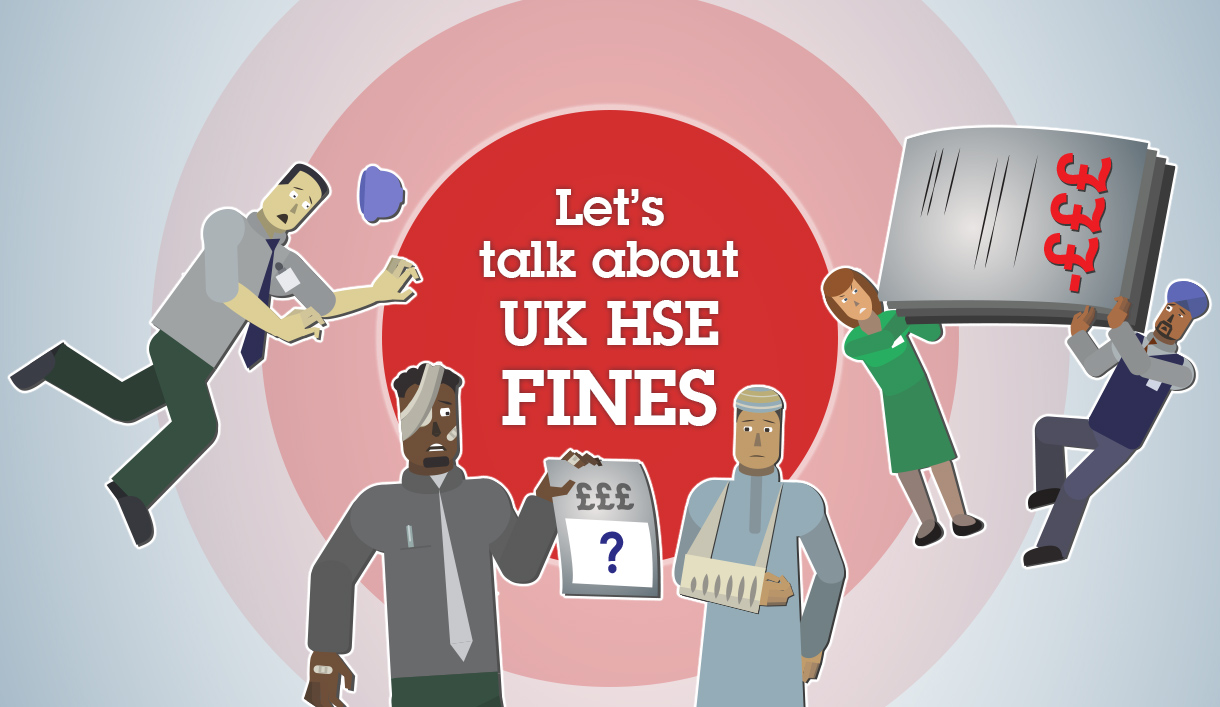
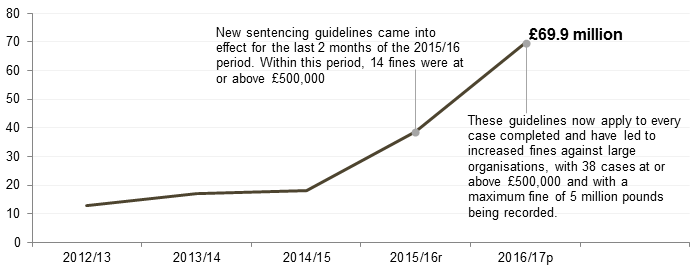
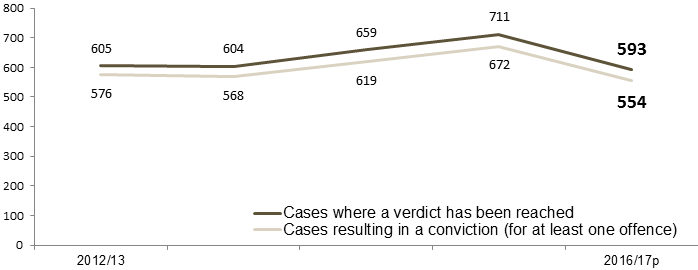



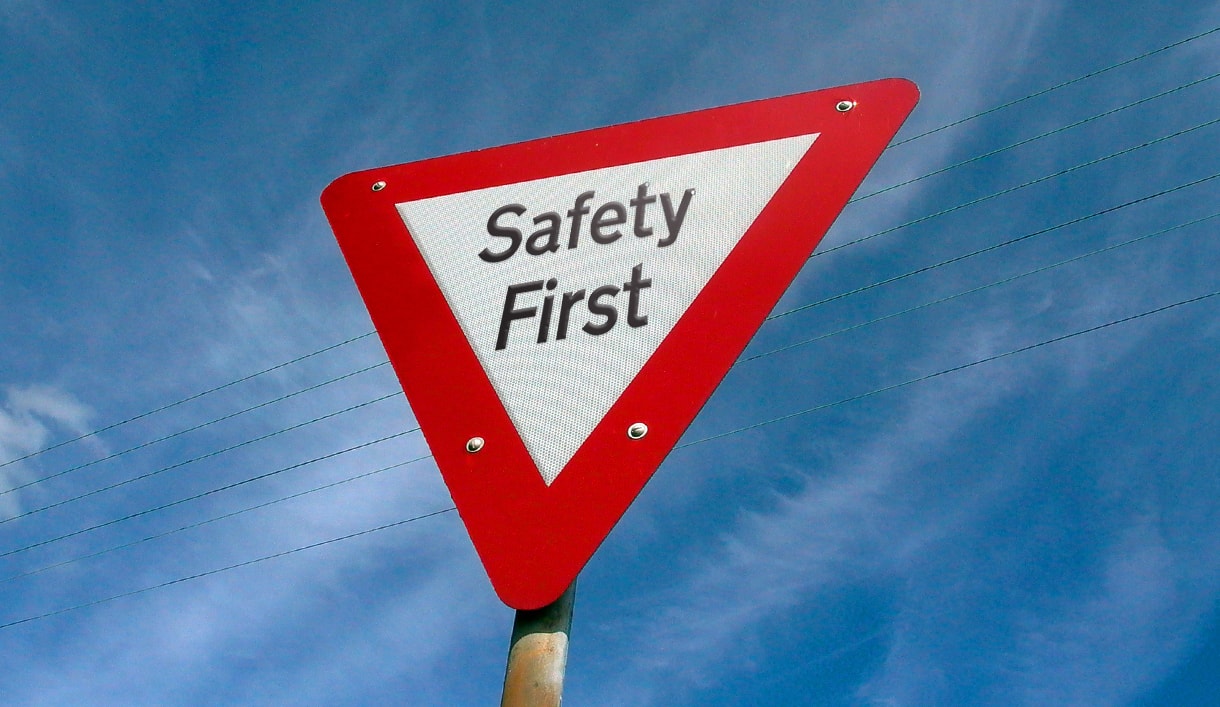
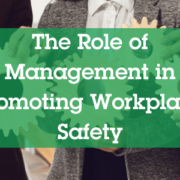

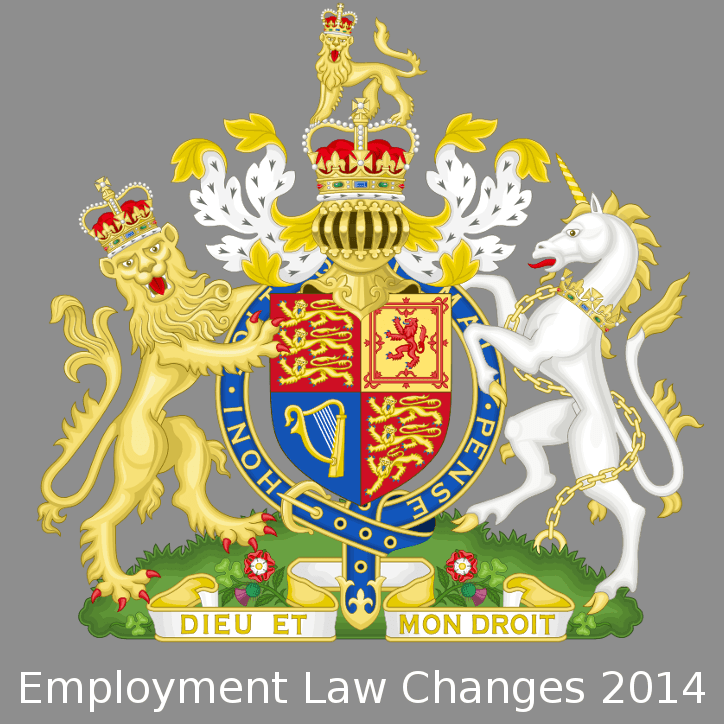
Leave a Reply
Want to join the discussion?Feel free to contribute!